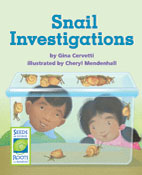As I mentioned in my very first post on this blog - in the youngest grade (K1) we will start the year with explorations of plants and gardening….but with the kindergarten students who are in K2 we will begin the year studying earth materials…pebbles, rock, sand, and clay.
Who doesn't love earth materials? …all those wonderful things to hold, squeeze, explore and observe.
Some of our lessons are based on a FOSS module for Grades 1-2 called Pebbles, Sand, and Silt This Module consists of four sequential investigations, each designed to introduce concepts in earth science. The investigations provide experiences that heighten students' awareness of rocks as earth materials and natural resources. They will come to know rocks by many names and in a variety of sizes. Pebbles and sand are the same material—just different sizes.
We have modified some of the lessons from this FOSS module on pebbles, sand and silt for younger students and we have added in lots of creative arts time with explorations and creations made of clay, sand and gravel and there are some wonderful field trips to learn about and explore soil and it is just a wonderful way to start the fall with observing, describing and exploring.
If you are person who loves rocks - loves to hold pebbles in your hand - I have a book to recommend to you -
"This is the story of a single pebble. It is just a normal pebble, as you might pick up on holiday - on a beach in Wales, say. Its history, though, carries us into abyssal depths of time, and across the farthest reaches of space. This is a narrative of the Earth's long and dramatic history, as gleaned from a single pebble. It begins as the pebble-particles form amid unimaginable violence in distal realms of the Universe, in the Big Bang and in supernova explosions and continues amid the construction of the Solar System. Jan Zalasiewicz shows the almost incredible complexity present in such a small and apparently mundane object. Many events in the Earth's ancient past can be deciphered from a pebble: volcanic eruptions; the lives and deaths of extinct animals and plants; the alien nature of long-vanished oceans; and transformations deep underground, including the creations of fool's gold and of oil. Zalasiewicz demonstrates how geologists reach deep into the Earth's past by forensic analysis of even the tiniest amounts of mineral matter. Many stories are crammed into each and every pebble around us. It may be small, and ordinary, this pebble - but it is also an eloquent part of our Earth's extraordinary, never-ending story."
A couple of quotes may give you a sense of the story….
"With some of these minerals, one can build quite specific histories. Zircon is unusually eloquent in this respect. It is zirconium silicate- that is, a mineral combination of the elements zirconium, silicon and the near-ubiquitious oxygen. But, it also shelters other elements, elements that otherwise find it hard to find a mineral home……But, this fragment of history is, to some extent, a sideshow, Zircon's main contribution is to allow students of the Earth - or of a pebble - to navigate, with incomparable precision, through the fourth dimension, through the deep time of Earth history. It does this courtesy of a transmutation, a find of natural alchemy that the medieval scholars never dreamed of - even as it was continually happening under their noses (albeit in the realm of the very small), while those ancestors of today's scientists made ever more frantic and fruitless attempts to conjure its action to make alchemical gold. The key here is zircon's hospitality to uranium."
I have to pause to say - I LOVE this line - "The key here is zircon's hospitality to uranium."
And this --- " Before any great expedition, there is a gathering of the forces - of the clans, the troops, the mercenaries - from near and far, by various routes. Once met, they will then travel en masse, their fortunes from then to be bound together for good or ill……Sediment particles of the future pebble were gathering, around the shores of Avalonia, in the Silurian Period, for a journey that would take them to a resting place, one where they would not see the light of day for something over 400 million years."
I can't tell you what happens next - that is only as far as I have gotten in the book so far - but don't you want to know the rest of the story?














